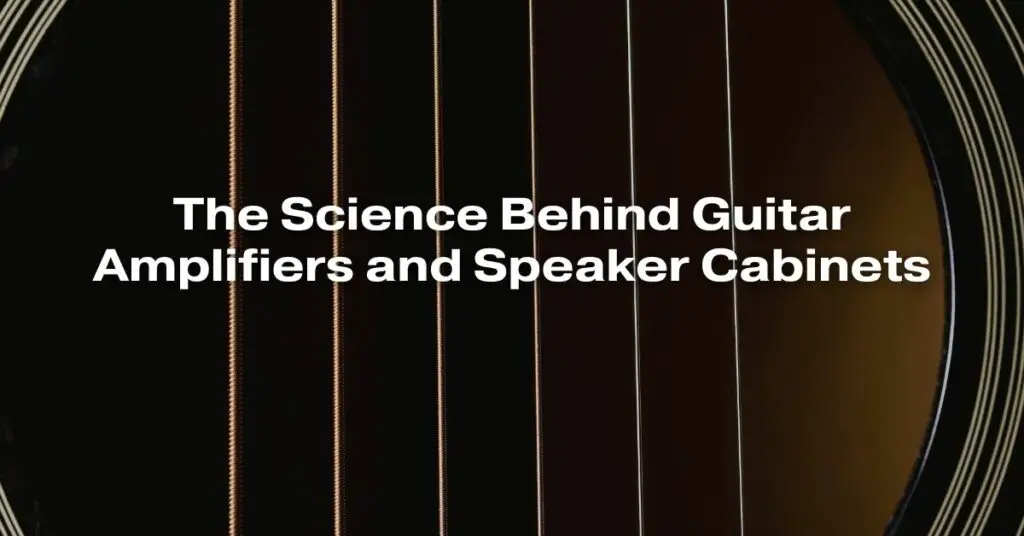Guitar amplifiers and speaker cabinets are the unsung heroes behind every electrifying guitar riff and soul-stirring solo. Musicians and enthusiasts alike marvel at the powerful sound these instruments produce, but not many are aware of the intricate science that goes into making them. In this article, we delve deep into the world of guitar amplifiers and speaker cabinets, uncovering the mysteries that make them an indispensable part of any guitarist’s arsenal.
Understanding the Basics
Before we dive into the intricate details, let’s grasp the fundamental concepts. A guitar amplifier is an electronic device that amplifies the signal from a guitar’s pickups, making it loud enough to be heard through a speaker. The amplifier consists of several components, including preamp and power amp tubes, transistors, and other electronic circuits that shape the tone and volume of the sound.
Speaker cabinets, on the other hand, house the speakers responsible for projecting the amplified sound. These cabinets are carefully designed enclosures that influence the overall sound quality by interacting with the speakers in complex ways.
The Role of Tubes and Transistors
One of the key differentiators among amplifiers is the type of amplification technology used. Tube amplifiers, also known as valve amplifiers, use vacuum tubes to amplify the signal. These tubes introduce a warm, natural distortion that many guitarists find pleasing to the ear. On the other hand, solid-state amplifiers use transistors for amplification, providing a cleaner and more reliable sound but lacking the characteristic warmth of tube amplifiers.
Tonal Shaping: Equalization and Gain
Amplifiers feature built-in controls for equalization (EQ) and gain, allowing guitarists to shape their tone. EQ knobs adjust the bass, midrange, and treble frequencies, enabling players to sculpt their sound to match their preferences and playing style. Gain controls, often labeled as “drive” or “gain,” dictate the amount of distortion in the signal. By manipulating these settings, guitarists can achieve a wide range of tones, from clean and crisp to heavily distorted and crunchy.
Impacts of Speaker Cabinets on Sound
Speaker cabinets are not just wooden boxes that hold speakers; they play a pivotal role in shaping the final sound. The size, material, and construction of the cabinet influence the resonance and dispersion of sound waves. Closed-back cabinets produce a tighter, focused sound, ideal for genres like metal and hard rock. In contrast, open-back cabinets create a more spacious and airy sound, making them suitable for genres like blues and jazz.
Speaker Types and Configurations
Guitar speakers come in various types, each with its unique characteristics. For instance, vintage-style speakers deliver a warm, smooth tone, while modern speakers offer enhanced clarity and projection. Additionally, the configuration of speakers in a cabinet, such as 1×12, 2×12, or 4×12, impacts the sound dispersion and volume. A 4×12 cabinet, with four 12-inch speakers, produces a massive sound suitable for large stages and arenas.
Conclusion: The Harmonious Blend of Art and Science
In conclusion, guitar amplifiers and speaker cabinets represent a harmonious blend of art and science. The delicate balance between electronic components, cabinet design, and player preference results in the creation of iconic sounds that define musical genres and eras. Whether you are a professional guitarist, a hobbyist, or simply a music enthusiast, understanding the science behind these instruments enhances the appreciation for the music created with them.
Next time you witness a guitarist unleashing a powerful riff or a soulful melody, you’ll have a newfound appreciation for the intricate science that makes it all possible. The marriage of technology and creativity in the world of guitar amplifiers and speaker cabinets continues to inspire musicians and captivate audiences, reminding us of the boundless possibilities when science and artistry come together in perfect harmony.


